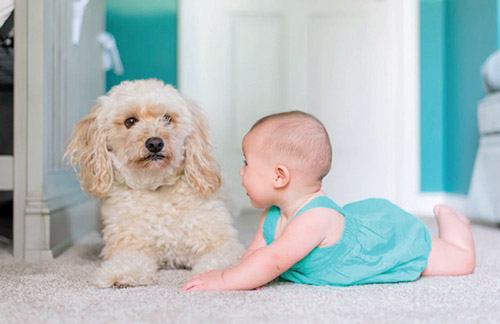
I am writing this article as a Bubby with a great deal of experience both personally and professionally in the baby domain. I have friends who will ask me questions regarding their grandchildren’s development particularly because life for the young parent got even busier than it had been for us more mature folks. With the current pandemic still looming, parents are generally working from home. Day care, camp and school changes have been made and it is often very convenient to place the baby of the family into a “container.” A “container” can be a number of things such as a car seat, an infant seat, a swing, a high chair or an ExerSaucer. These are readily available “containers” that babies may be spending a great deal of time in as a safe, secure place to stay while everything else needs to be taken care of in the home.
My advice would be to encourage family members to help increase baby’s time spent on the floor. Spending time on the floor on the tummy pushing onto the arms is more important than one might imagine. The other children can get down to the baby’s level (face to face) as a way to motivate the baby during floor time. I personally have worked with babies on a mat placed on the dining room table. This is for the baby that is not yet rolling and an adult is present at all times. This position benefits the baby, who will find in much more interesting to be up on the table as opposed to down on the floor where the baby may lose interest. The table allows the other family members to sit on a chair comfortably and see the baby eye to eye with ease.
The prone on extended arms (POXA) position is usually seen at 5 months of age. This position will enable the baby to use his hands for propping himself up in sitting, and the baby will soon progress to independent sitting at 6 months. Please keep in mind that babies do develop at different rates and the range is significant. Getting in and practicing the POXA position is very important. When the baby is maintaining POXA he is developing depth perception needed for future gross motor, fine motor and visual-motor skill development.
Depth perception is necessary for crawling around and through obstacles and also walking without bumping into objects and/or tripping over toys. Depth perception is also needed for negotiating stairs. A child may be fearful when not properly perceiving where the step is. Following through step over step will be challenging.
With regard to fine motor activities, without POXA, the arches of the hand are not having a chance to develop, which in turn impacts ADL (activities of daily living) skills such as bathing, pulling up pants and socks, buttoning and self-feeding with utensils. The child may have a poor reach and grasp (depth perception issue); they might overshoot toy placement, sometimes noted with an activity such as stacking rings. Grip strength and pincer grasp may be weak and some indwelling of the thumbs may be noticed. Handwriting may be affected secondary to low endurance, difficulty spacing between words, difficulty staying in lines and a weak pencil grasp.
An easy formula to remember is POXA equals improved depth perception with awareness of body in space needed for gross motor, fine motor and visual-motor skills development.
Let’s get the babies out of the “containers” periodically during the day and let them explore the floor and their surroundings.
I am available to assess your child with a complimentary 15-minute consult. Please contact me if you are interested. I can be reached at [email protected].
Stacey Berman Gardin, OTR/L is a pediatric occupational therapist licensed in NY and NJ. She has been practicing OT since 1981. For the past 20 years the focus has been treating children through early intervention. Stacey is a graduate of SUNY Downstate College of Health Related Professionals.













